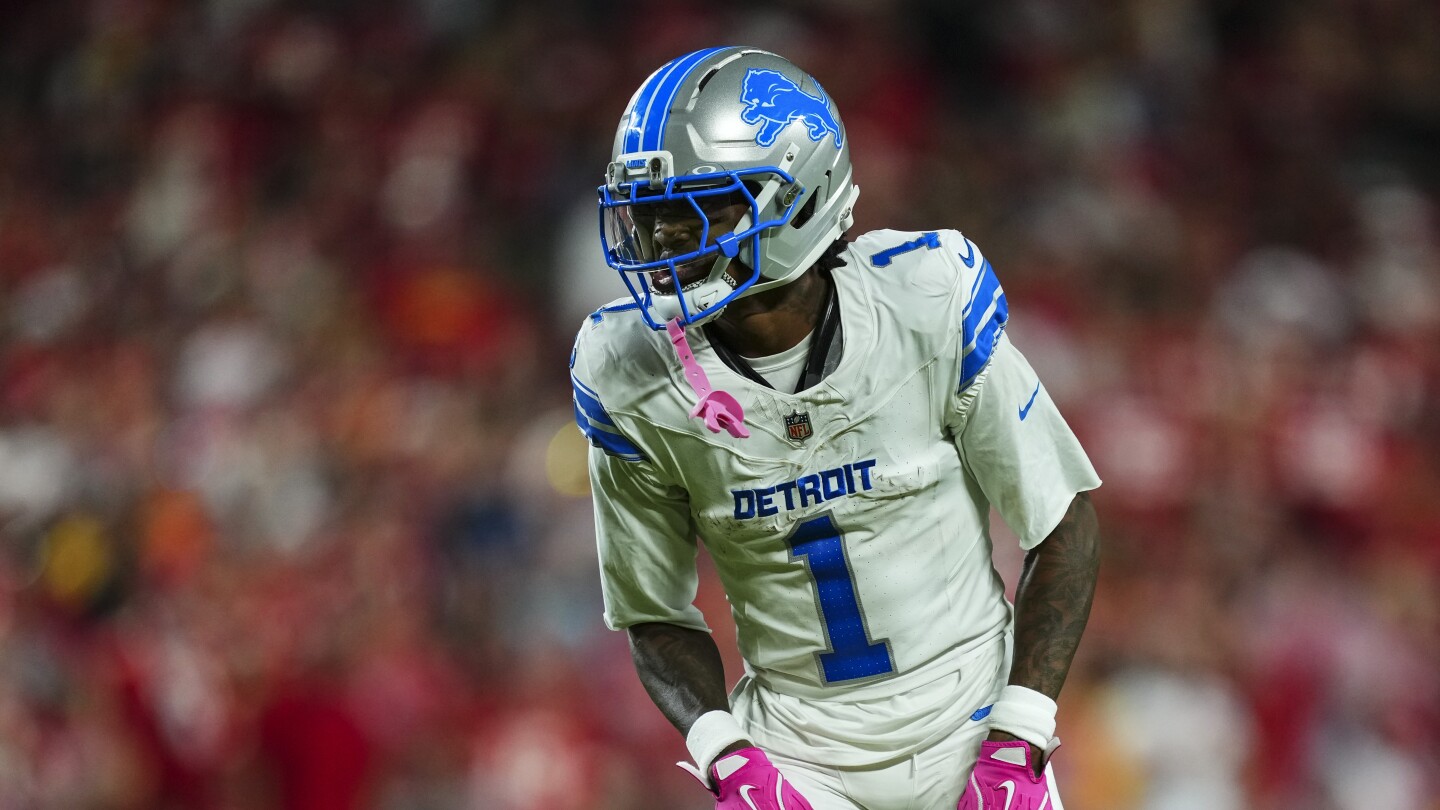Copyright Nbc Sports

The goal of this regression-centric space is to tell fantasy football folks which of their borderline fantasy options are running particularly hot or particularly cold, to use a little technical language. Every week during the regular season I’ll highlight players whose usage and opportunity doesn’t quite match their production. That might look like a running back scoring touchdowns at an unsustainable clip or a pass catcher putting up big stat lines while working as a rotational player in his offense. It could also look like a pass catcher seeing gobs of air yards and targets without much to show for it. Things of that nature. 👉 Some stats I’ll focus on weekly in the Regression Files: Rush yards over expected, targets per route, air yards, air yards per target, red zone targets, green zone targets, quarterback touchdown rate, and expected touchdowns. A lot of this regression stuff, as you probably know, comes down to touchdowns — specifically, predicting touchdowns (or lack thereof). I’ll (mostly) ignore every-week fantasy options who you’re going to play whether they’re running hot or cold, or somewhere in between. My goal is to make this column as actionable as possible for all fantasy formats. Telling you to keep playing Jahmyr Gibbs during a cold streak doesn’t strike me as particularly actionable. Today I’ll ask whether recent wide receiver performances are real or fake or something in between those two totally subjective measurements. I’ll use the most tortured sort of analysis to answer this question because that’s the only way I know. Jerry Jeudy (CLE) Unlike David Bowie in Twin Peaks: Fire Walk With Me, we are going to talk about Jeudy. I mentioned somewhere last week — possibly a Rotoworld Football Show or a social media post — that Jerry Jeudy entered Week 10 running colder than any wideout in modern NFL history. Jeudy was 41 points below his expected fantasy output through the Browns’ first eight games; no one else was more than 25 points below expected. For context: Elic Ayomanor, who’s been downright horrific this season, is 15 points below his expected fantasy production. If Jeudy had been a zero in fantasy points over expected, he’d have been a top-30 option going into Week 10 against the Jets. He was 28th among wideouts in targets and 60th in receiving yards. A colder run is hard to find. Jeudy’s Week 10 usage was so good as to be disorienting. He saw a stunning 12 first-read targets from Dillon Gabriel, the second most on the week among all NFL pass catchers. Jeudy had averaged 5.6 first-read targets per game before going for six grabs, 78 yards, and a score on 12 targets in Week 10. Against the Jets, he saw 45 percent of Cleveland’s first-read looks. His targets per route exploded, from 18 percent in the season’s first nine weeks to 32 percent against New York. Jeudy’s air yards profile changed quite a bit in Week 10 in ways that could (should) be good for his fantasy prospects. Jeudy against the Jets averaged 9.5 air yards per target, way down from his Week 1-9 rate of 12.8 air yards per target. He had averaged 83 air yards per game before his Week 10 breakout; against the Jets he racked up 114. The shrunken rate of air yards per target suggests the Browns made a real effort to get Jeudy involved in the short passing game, also known as the only passing game with the short, noodle-armed Gabriel under center. The increase in air yards is just a product of increased opportunity (that Gabriel is atrocious on these short-area throws is another issue entirely: He ranks 45th out of 46 QBs in accuracy on attempts between 1-10 yards this season). This marked shift in Jeudy’s usage came in offensive coordinator Tommy Rees’ first game as the Browns’ play caller after Kevin Stefanski did his annual quitting of play calling duties. I don’t think any of this — the high rate of targets, the shorter looks — was an accident. There was real intention here. Jeudy’s overall receiving profile hasn’t been all that bad in 2025. It got a big boost in Week 10 though, and I think folks should be cautiously optimistic about Jeudy as a top-30 weekly option — certainly a starter in 12-team formats in which you start three or four wideouts. Jameson Williams (DET) A week after Lions offensive coordinator Johnny Morton pleaded for forgiveness from the press and Detroit fans about how he has used — or not used — Jamo in 2025, Dan Campbell said enough of this nonsense and took over offensive play calling. The way you know Campbell — our big, strong analytics king — took over play calling is because the Lions actually scored points and looked good doing it in Week 10 against the ghost of the Commanders. It’s one game and all, small samples being what they are, but the Lions easily led the NFL in EPA per play last week. They had been tenth in EPA per play through Week 9. Their drop back success rate (66.7 percent) was tied with the uber-efficient Seahawks for the best of Week 10. Campbell, unlike Morton, decided to pass the football sometimes, as the Lions were 3.5 percent over their expected pass rate. It’s the first time they’ve been above their expected pass rate in 2025. We saw the Lions’ neutral early down pass rate go from 43 percent over the season’s first nine weeks to 51 percent against Washington. Campbell did the analytics. Dismiss the Lions’ Week 10 blowup as the product of a soft matchup at your own peril, dear fantasy head. Campbell’s first order of business was properly utilizing Jameson Williams. Jamo, who carried a 15.4 air yard per target into Week 10, saw that number drop to 10.4 against the Commanders. He was a priority in the Lions’ passing attack instead of a secondary or tertiary option. Jamo was targeted on 23 percent of his pass routes in Week 10, miles above his season-long rate of 16 percent. He was (finally, at long last) seeing more of the easy-button targets that made him so intriguing in 2024. It would have been nice to know Morton was going to treat Williams as a cardio king coming into 2025. Nevertheless, we persist. Assuming Campbell keeps offensive play calling duties to himself — a good assumption, I’d say — Williams’ Week 10 usage probably means he’ll be more than a splash-play dependent WR3/4 in 12-team fantasy leagues. More aggressive passing and more intermediate looks for Jamo could do the impossible: Vault him into low-end WR2 territory. Mack Hollins (NE) Hollins, a living, breathing comedy bit, now has two (very) usable fantasy lines in three weeks as an every-down wideout in the New England offense. The guy who refuses to use utensils is eating. Hollins in Week 10 against the Bucs led Patriots receivers in routes, targets, receptions, receiving yards, air yards, and targets per route run (34 percent). A mere five receivers across the league logged more air yards than Hollins in Week 10. Over his past three games, Hollins is top-20 in total air yards thanks largely to Kayshon Boutte’s absence. Anyone seeing downfield looks from the EPA machine commonly called Drake Maye should have our attention. It’s why I wrote up Demario Douglas in last week’s Regression Files (Douglas did not, in fact, see a bump in routes with Boutte out). If Hollins is the air yards eater with Boutte sidelined, so be it. That gives him plenty of fantasy appeal. Maye is third in accuracy and yards per attempt on throws of at least 20 air yards. He’s the universe’s answer to the mind-boggling downfield inefficiency of Bo Nix. I think Hollins is interesting for flex purposes for as long as Boutte is sidelined with his hamstring issue. Positive Regression Candidates Jacoby Brissett (ARI) When Brissett wasn’t fumbling for two Seahawks touchdowns in the Cardinals’ Week 10 massacre in Seattle, he was putting up halfway decent fantasy numbers and understanding the task at hand: Feeding Marvin Harrison, Jr. and Trey McBride no matter what. They combined for 26 of Brissett’s 45 attempts in Week 10. For that we are grateful. Brissett is never going to be an uber-efficient passer. But there’s inefficient and then there’s a guy (Brissett) having just three touchdowns on 16 inside-the-ten attempts this season. He’s running cold where it counts, and fantasy managers would do well to note as much. Arizona has the fourth highest neutral pass rate over the past four weeks with a quarterback who can see above his offensive linemen and is willing to stand in the pocket and sometimes take a hit if that’s what it takes. The Cardinals have been top-eight in red zone pass rate over expected since Brissett’s takeover. We could see him regress (in the good way) this week against a miserable San Francisco defense giving up the NFL’s fifth highest adjusted yards per pass attempt this season. Derrick Henry (BAL) With two touchdowns over his past four games — and just six scores on the season — Henry isn’t checking the TD-heavy box that makes him a viable RB1 in PPR formats through Week 10. Twenty-three scoreless Week 10 touches against an exploitable Minnesota run defense probably put Henry drafters on tilt. That’s OK. I’m here for you. So is the Regression Reaper. Henry this season has 11 inside-the-five carries, second only to Josh Jacobs, the only guy who ever scores touchdowns for the Packers. Henry has converted three of those 11 rushes into touchdowns. In fact, he has just three scores on 17 inside-the-ten carries through Week 10. Henry, seeing 70 percent of the Ravens’ green zone rushing attempts and 74 percent of their inside-the-five carries, is running cold by any standard, but especially his. Last year fully half of his 18 inside-the-five rushes went for touchdowns. The Ravens in 2025 aren’t the ultra-giga-turbo run heavy team they usually are near the goal line. They rank 17th in pass rate over expected in that part of the field, and against the Vikings they were 22 percent above their expected pass rate inside the ten. The (positive) Regression Reaper could come for Henry as soon as this week against a Browns defense facing the second lowest neutral pass rate in 2025. Dontayvian Wicks (GB) The one thing we know for sure about Wicks is that he’s way better than Matthew Golden, who has never been good. Golden was sidelined last week with a shoulder issue, Wicks returned from injury, Romeo Doubs went down with a chest injury, and Wicks became the de facto WR1 in the wretched-but-also-good Green Bay offense. Wicks led the Packers with six first-read targets from Jordan Love on Monday night against the Eagles. He led all Packers wideouts with a 21 percent targets per route run rate on his way to four grabs for 38 yards. I know, thrilling stuff. If Doubs misses Week 11 against the Giants, Wicks could be flex-viable in deeper formats as the only Green Bay receiver who gets open and commands targets at a solid clip (Wicks led the Packers in 2024 with a 30 percent TPRR and was second on the team in first-read target rate). I know you still have a bad taste in your mouth from that time you picked up Wicks and he gave you a zero. My recommendation is that you get over it and recognize that he’s good and the rest of the Green Bay receivers stink if Doubs is out. Negative Regression Candidates Keon Coleman (BUF) I know there are a lot of folks out there -- Bills fans and otherwise -- who have clung to the idea of Coleman as a legit starting NFL wideout. Their priors were seemingly confirmed in Week 10 against the Dolphins as Coleman had three receptions for 46 yards and a touchdown on eight targets. This is where I say you should feel bad about feeling good about Coleman’s Week 10 output. It was fueled almost entirely by pass volume in a game that saw the Bills inexplicably chasing points throughout the final three quarters. Josh Allen logged 40 pass attempts — the second highest total of his 2025 season — and produced 401 air yards. That’s nearly double Buffalo’s average per-game air yards mark. That (likely) won’t happen often, or ever again, per my spreadsheets. Dalton Schultz and Nico Collins (HOU) Schultz had seven catches for 53 yards and a touchdown while Collins came to life with 136 yards on seven receptions in the Texans’ surreal Week 10 comeback against the down-unfathomably Jaguars. Like Keon Coleman’s Week 10 production, Collins and Schultz were (major) beneficiaries of inflated drop back volume in what might be called a chase script. The Texans, led by Davis Mills, led the league in total air yards (450) by a wide margin last week against Jacksonville. Only the Cardinals — who had four quarters of garbage time — logged more drop backs than the Texans last week. It’s not absurd to think the Texans offense could be somewhat pass heavy in the coming weeks. They’re somehow inside the top-ten in pass rate over expected this season and their 57 percent neutral pass rate is in the league’s top half. So yes, there is a scenario in which they lean into the pass a little bit down the stretch. Remember though: The Texans going into Week 10 had averaged 184 air yards per game, 266 short of what they had in Week 10. Maybe Schultz and/or Collins can keep it up in Week 11 against an atrocious Titans defense. The Regression Reaper looms, however. Juwan Johnson (NO) I know folks are going to be upset about this one. Of course Johnson won’t catch two touchdowns every week, you’ll say. Why even mention him here?



